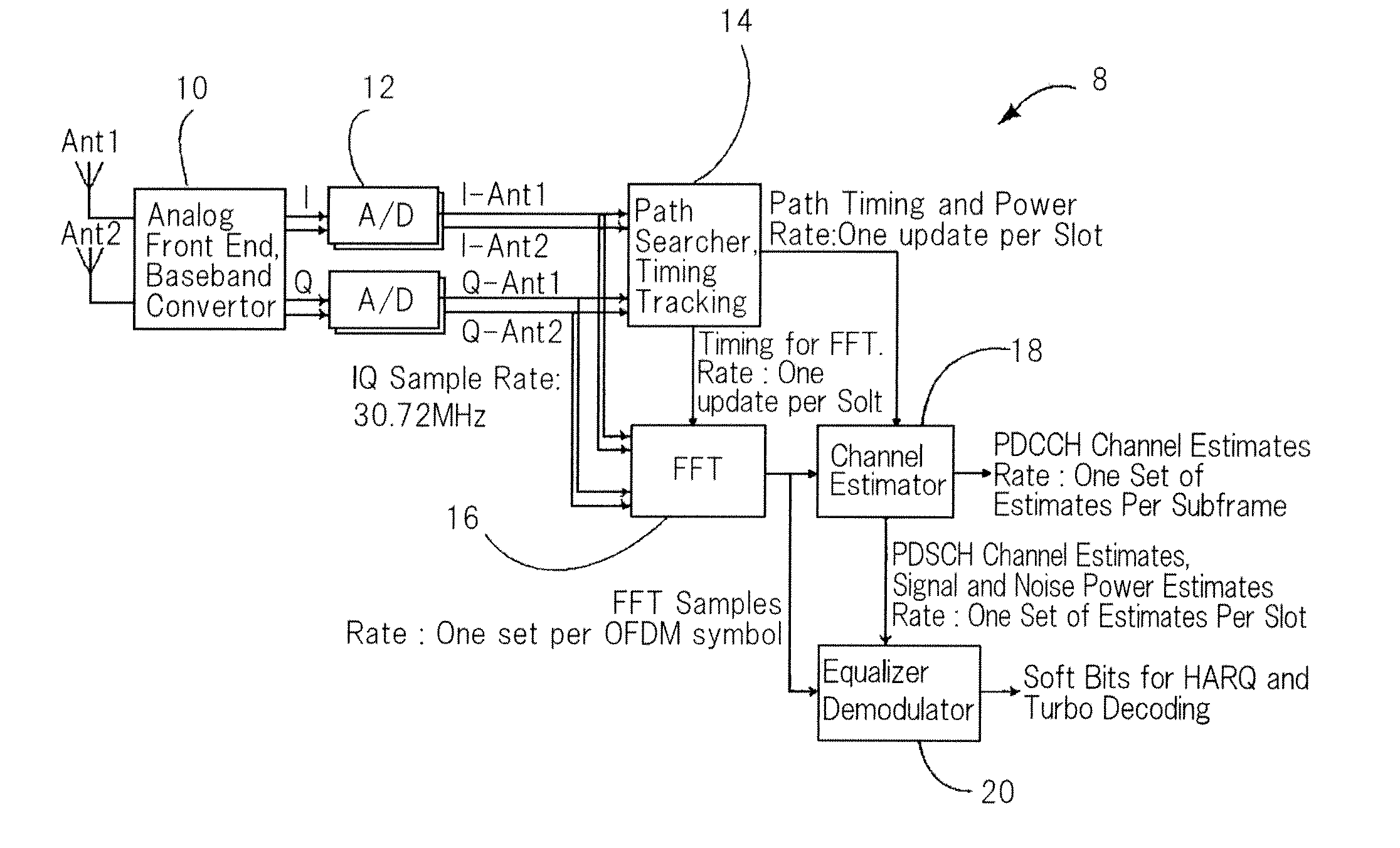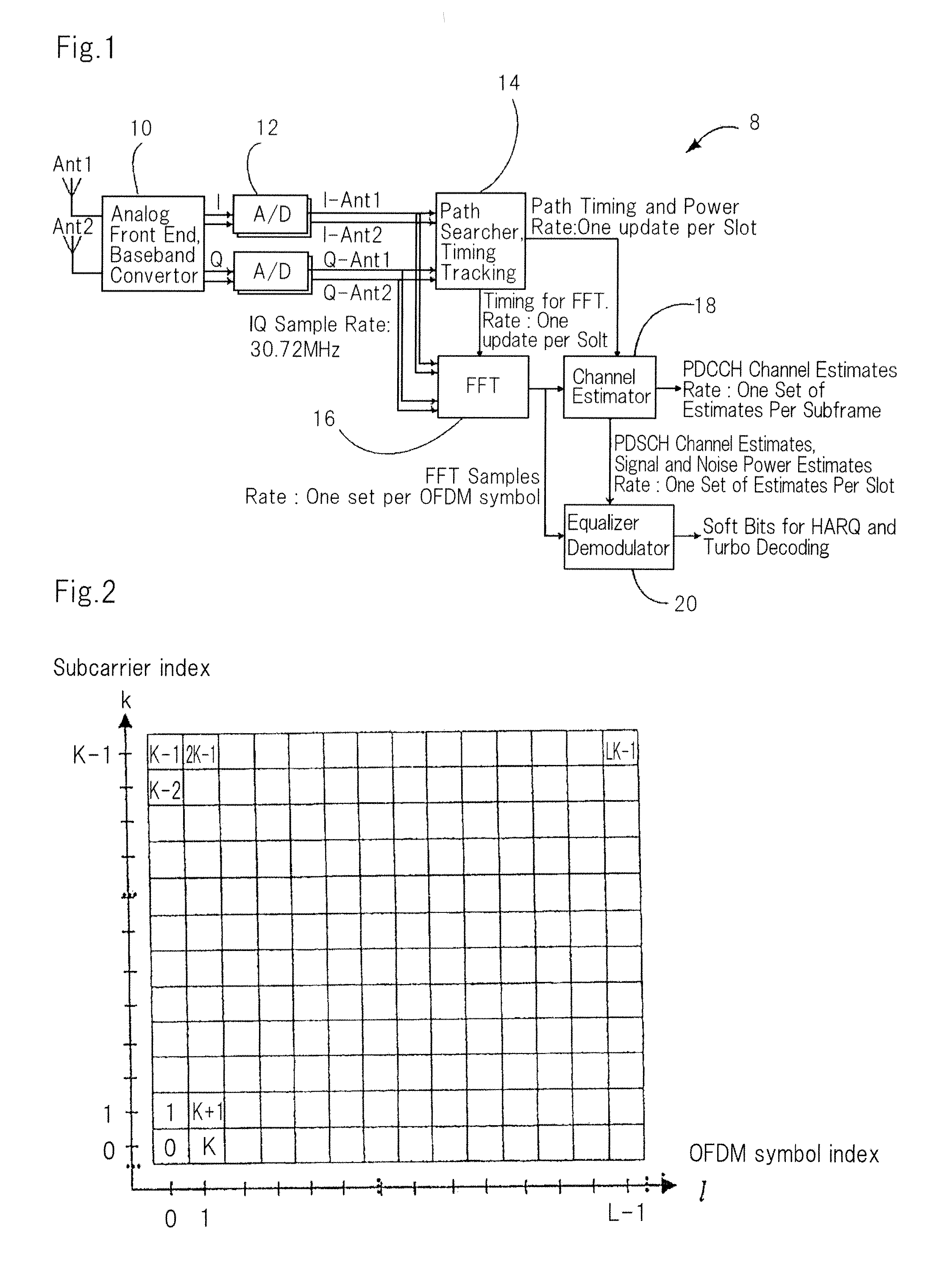Channel estimation for OFDM systems
a channel estimation and channel estimation technology, applied in the field of orthogonal frequency division modulation (ofdm) communication systems, can solve the problems of high computational cost, high computational cost, and the inability to accurately estimate the channel fading of signals received from ofdm transmitting antennas, so as to reduce complexity and improve method performance.
- Summary
- Abstract
- Description
- Claims
- Application Information
AI Technical Summary
Benefits of technology
Problems solved by technology
Method used
Image
Examples
Embodiment Construction
[0070]An embodiment of the invention will be described with reference to channel estimation in an LTE / LTE-A UE receiver 8, as shown in FIG. 1. It is understood that the invention is not limited to this embodiment and is applicable in the BTS, as well as other OFDM based systems.
[0071]With reference to FIG. 4, the following steps are performed during device design time, to build a look up table containing a set of G matrices for use in channel estimation. For each mode in a range of all valid processing modes, a G matrix is precalculated at step 50 for each SNR in a range of SNR values using a fixed Doppler frequency and a fixed delay spread. At step 52, the G matrices are indexed by the signal to noise ratio and processing mode. However, it is to be understood that the G matrices may be precalculated only for a single processing mode, and may be indexed by SNR only. A specific example of the method is described below: For a plurality of discrete signal to noise ratios (such as a ran...
PUM
 Login to View More
Login to View More Abstract
Description
Claims
Application Information
 Login to View More
Login to View More - R&D
- Intellectual Property
- Life Sciences
- Materials
- Tech Scout
- Unparalleled Data Quality
- Higher Quality Content
- 60% Fewer Hallucinations
Browse by: Latest US Patents, China's latest patents, Technical Efficacy Thesaurus, Application Domain, Technology Topic, Popular Technical Reports.
© 2025 PatSnap. All rights reserved.Legal|Privacy policy|Modern Slavery Act Transparency Statement|Sitemap|About US| Contact US: help@patsnap.com



